Robots on the Run! 5 Bots That Can Really Move
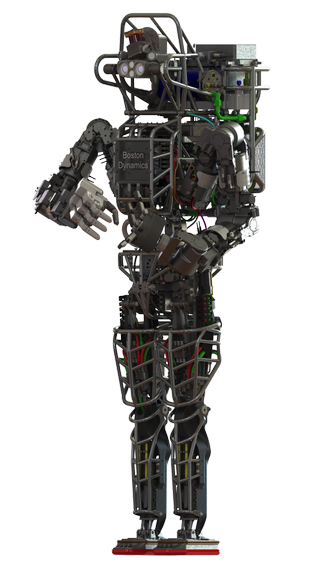
Earlier this month, the Google-owned robotics company Boston Dynamics released a video of its humanoid robot running through a forest. The RoboCop-type bot, named Atlas, freaked out some people, but the footage also had some tech geeks cheering.
A bot that can run over rough, outdoor terrain is a big deal in robotics, a field in which researchers are constantly working to develop machines capable of moving around outside the lab. Boston Dynamics has a handful of bots that run just as well as Atlas, and researchers from other institutions are also building machines that can ramble about in the real world.
From fish-inspired bots that can swim under ships, to caninelike machines that can gallop up hills, here are five of the coolest, most capable robots out there. [Humanoid Robots to Flying Cars: 10 Coolest DARPA Projects]
1. Atlas unleashed
With their heavy torsos and skinny legs, two-legged robots are kind of clumsy. If you need proof, check out the blooper reel from this year's DARPA Robotics Challenge (DRC), a humanoid-robot competition hosted by the Defense Advanced Research Projects Agency.
The Atlas robot was used by several of the finalists who competed in the DRC in June, including the Florida-based team that came in second place and the sixth place team from the Massachusetts Institute of Technology. Though Atlas is a pretty good runner, the bot has room for improvement, according to Marc Raibert, Boston Dynamics' founder and a former professor at MIT and Carnegie Mellon University. (CMU).
In the video of Atlas running through the woods, Raibert said that Boston Dynamics engineers are working on getting Atlas off its tether, which connects the bot to the power source that keeps its hydraulic system pumping (and the bot moving). The bot's other power source — a lightweight, lithium-ion battery pack — currently lasts only for about an hour.
Sign up for the Live Science daily newsletter now
Get the world’s most fascinating discoveries delivered straight to your inbox.
2. Snakes on an (inclined) plain
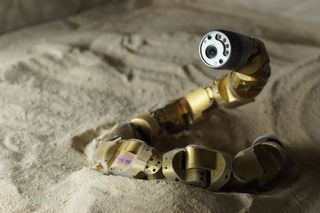
To build robots capable of sliding into small spaces and slithering over rocky terrain, researchers at CMU turned to snakes for inspiration.
The modular snake robots created by CMU researchers can move their bodies in ways that humanoid robots would find troublesome. They crawl, they climb and some can even swim. But there was one thing that "snake bots" couldn't do very well until recently: climb up sandy slopes.
In 2014, a team of researchers at the Georgia Institute of Technology teamed up with the Robotics Institute at CMU to study a creaturethat is very good at navigating sandy hills — the sidewinder rattlesnake (Crotalus cerastes) — and apply what they learned to CMU's modular robots. This collaboration resulted in a snake bot that can slither over sand just as well as it can move across dirt. The new-and-improved bot is now an even more promising robot for future search-and-rescue missions.
3. Man's best robot friend
There are a lot of robots out there that could pass as pets, but how about a giant, 160-lb. (73 kilograms) mechanical dog? That's how much Spot, Boston Dynamics' newest, canine-inspired robot weighs. Introduced earlier this year, Spot can jog up and down hills, navigate through trees and keep its footing on uneven terrain.
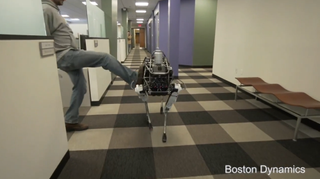
And the robot has siblings. Spot's oldest brother, BigDog, is huge, tipping scales at about 240 lbs. (109 kg). And another Boston Dynamics four-legged bot, the LS3 robot, is just as big as BigDog, but it's a bit faster and quieter, making it a better tool for soldiers and others who need discreet mechanical "pets" to carry their gear.
Development of the LS3 bot was funded by DARPA and the U.S. Marine Corps, and the robot has a few battle-friendly features. For one thing, the dog bot doesn't need a driver; it automatically follows its leader using an onboard computer vision system. Capable of hauling up to 400 lbs. (180 kg) at a time, this robot can also be sent into the field without an escort. LS3 finds its way using internal GPS and terrain-sensing technology.
4. Mechanical kitties
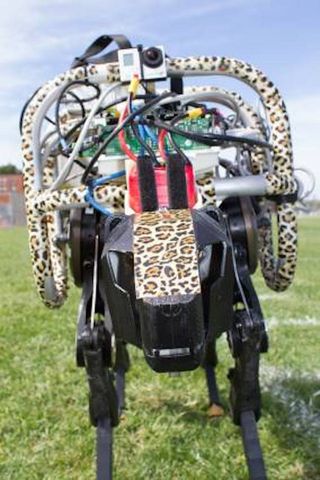
Speaking of pets, cat lovers needn't feel neglected by the apparent lack of feline-inspired robots; there are several catlike robots out there, and they all have special skills.
Boston Dynamics' Cheetah is the fasted legged robot in the world — it can run on a treadmill at speeds reaching 29 mph (47 km/h). This remotely powered bot has never proven itself outdoors. However, its slower cousin, WildCat, is capable of navigating outdoor terrain. Created for DARPA's Maximum Mobility Manipulation (M3) program, WildCat is designed to be agile and flexible, to help soldiers with a wide range of missions.
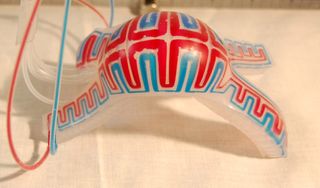
MIT also designed a robot for DARPA's M3 program that can reach speeds of 10 mph (16 km/h). MIT's cheetah bot can leap over hurdles and doesn't need a tether to stay upright.
5. Futuristic fish
Another MIT robot made waves in 2014, after it demonstrated its swimming skills in an online video. Designed to swim just like a real fish, the autonomous bot is super flexible and fast, enabling it to turn on a dime. It's important for this robot to mimic a fish precisely because it was made to infiltrate schools of fish and collect environmental data that can be brought back to researchers.
Part of the robot fish's success is its soft body, which mimics the anatomy of a fine-boned fish. Other underwater bots, like Harvard University's octopus-inspired robots, take this design even further. Harvard's bots are made from stretchy plastics and rubbery silicone, and keep their shape thanks to compressed air that is pumped through their artificial limbs. The soft structure of "octobots" makes them well suited for swimming into small crevices.
Follow Elizabeth Palermo @techEpalermo. Follow Live Science @livescience, Facebook & Google+. Original article on Live Science.

Elizabeth is a former Live Science associate editor and current director of audience development at the Chamber of Commerce. She graduated with a bachelor of arts degree from George Washington University. Elizabeth has traveled throughout the Americas, studying political systems and indigenous cultures and teaching English to students of all ages.
Most Popular

